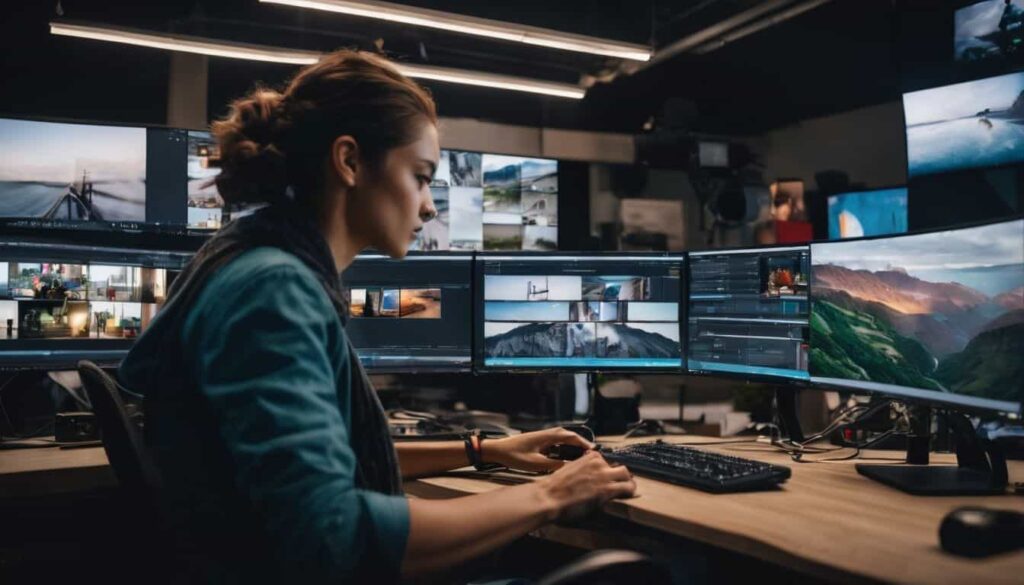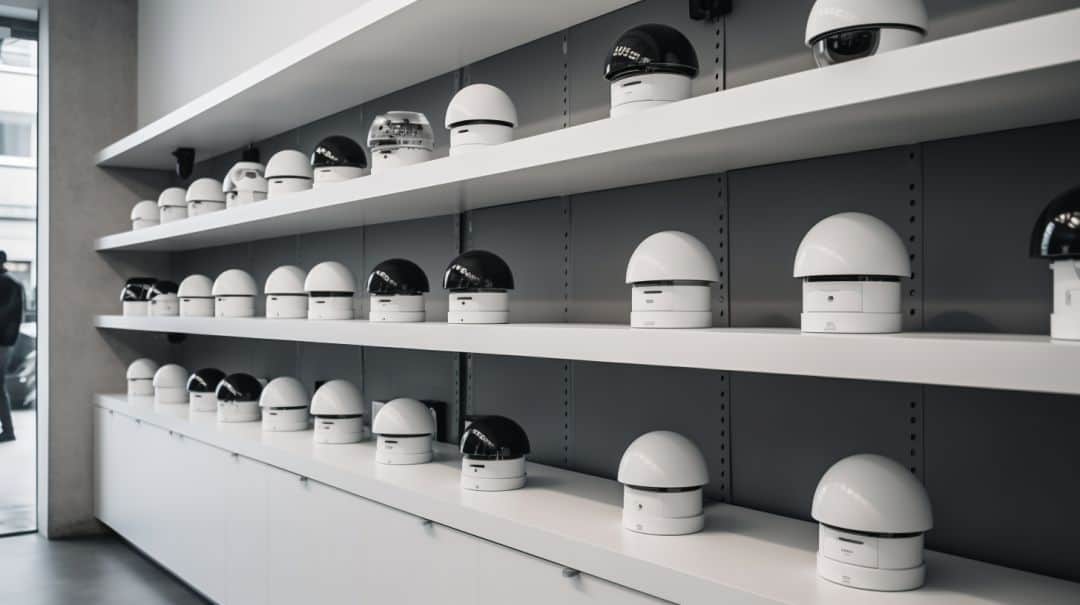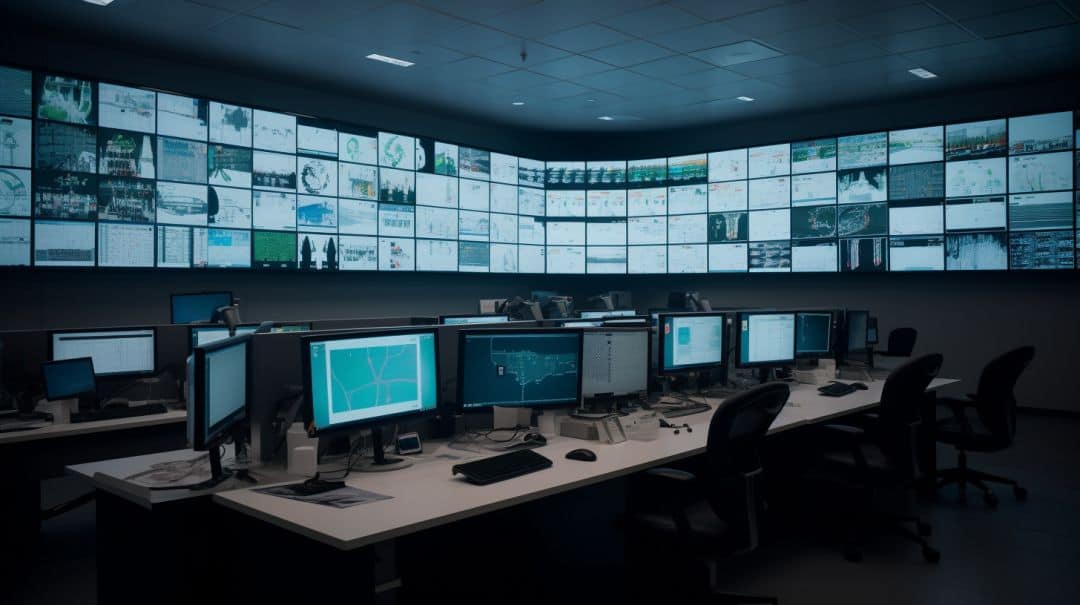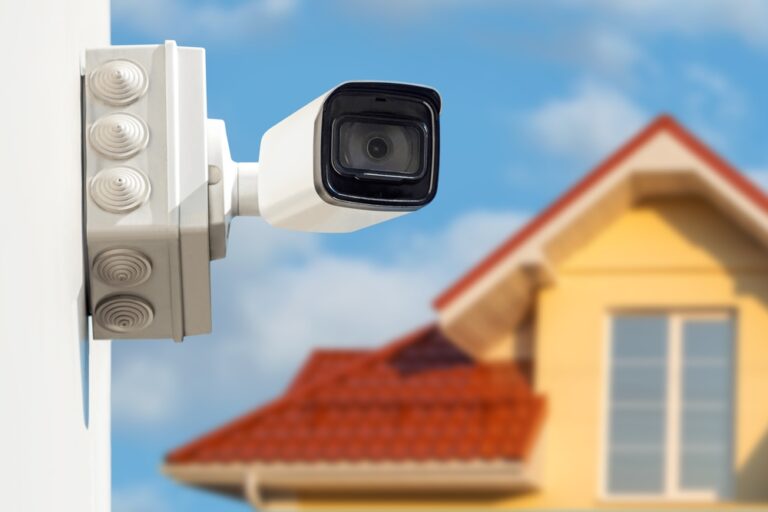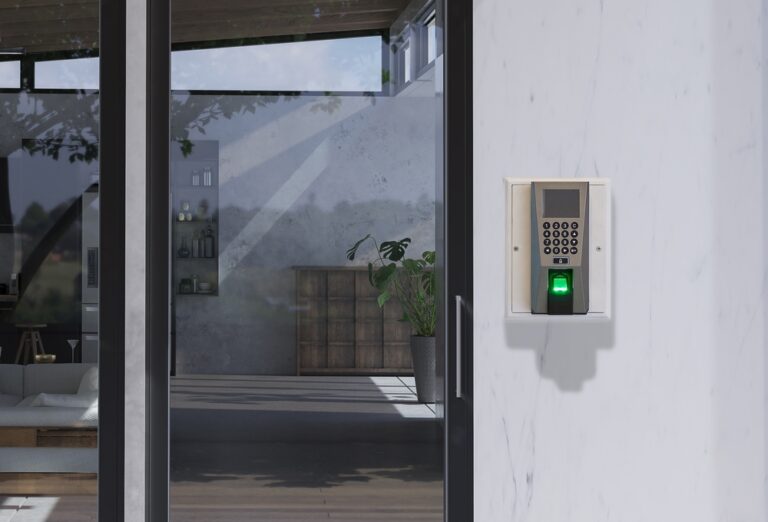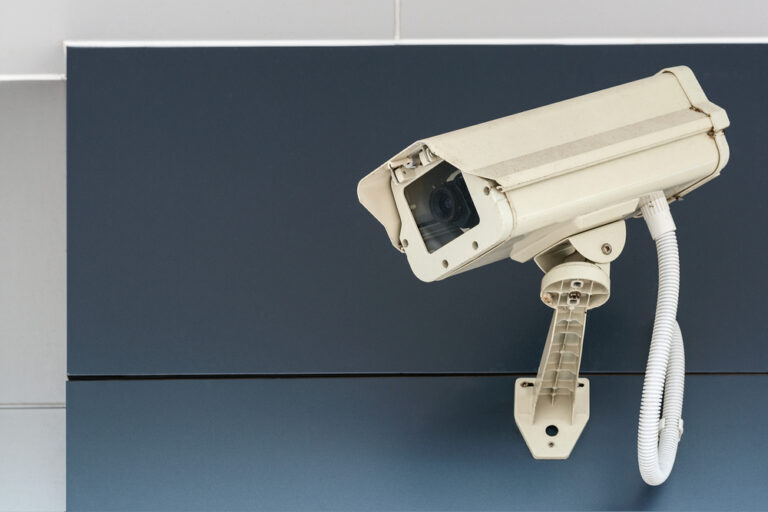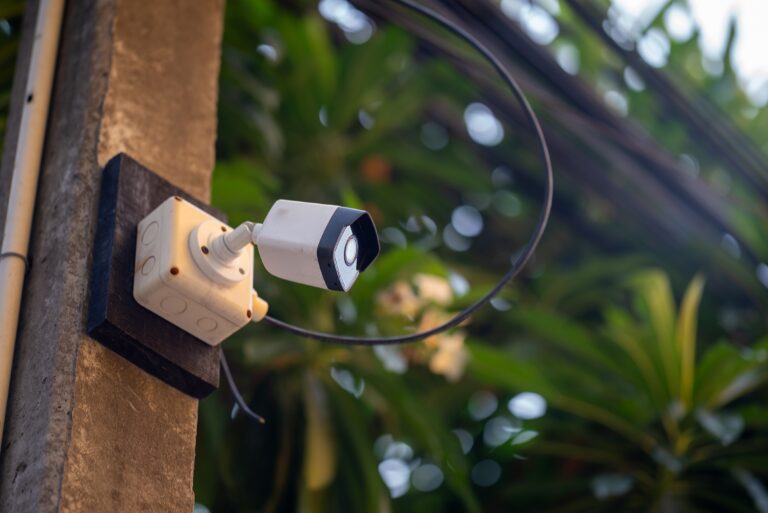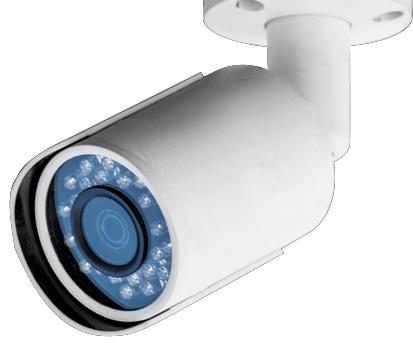- 1) Key Takeaways
- 2) What is Encoding and Decoding in Video Compression?
- 3) Understanding Video Compression
- 4) The Importance of Video Quality in Security Cameras
- 5) Exploring Different Types of Security Cameras
- 6) Types of Security Camera Video Compression
- 7) Decoders In Security Camera Systems
- 8) Factors That Affect Video Quality
- 9) Features of High-Quality Security Camera Systems
- 10) Understanding Different Features of Security Cameras
- 11) Installation Guide for 4K Security Camera Systems
- 12) Best Picks for 4K Security Camera Systems
- 13) FAQs about 4K Security Cameras
- 14) Conclusion
- 15) Conclusion
-
16)
FAQs
- 16.1) I see cameras advertised as 1080p or 4K. Does higher resolution automatically mean better video?
- 16.2) My backyard camera seems to get grainy at night. How can I get clearer night vision video?
- 16.3) What should I look for if I need to identify faces or license plates in the video?
- 16.4) I have 12 security cameras – will an NVR record them without losing video quality?
- 16.5) Why does video quality matter for security cameras anyway?
Are you struggling to understand what makes a security camera effective, particularly when it comes to video quality? Did you know that knowing the difference between encoding and decoding is key in this aspect? This article will guide you on how to choose the best security camera based on its video quality, taking into account factors like resolution, frame rate, and field of view.
Keep reading; your journey towards high-quality surveillance is just beginning!
Key Takeaways
- High – quality video in security cameras helps spot details and offers clear images. This quality depends on factors like resolution, frame rate, and field of view.
- Encoding turns raw footage into a compressed digital file for easier storage and transmission. Decoding turns the encoded data back into a useable format.
- There are different types of security cameras to choose from including bullet cameras, dome cameras, PTZ cameras, box cameras and thermal cameras.
- Video compression is important as it reduces the size of video files without reducing quality. Two major methods used in security camera systems are H.264 and H.265.
- When selecting between standalone or NVR system security camera models consider your specific needs for image quality, scale of surveillance area and hardware compatibility with encoding formats like H.264 or H 265.
What is Encoding and Decoding in Video Compression?
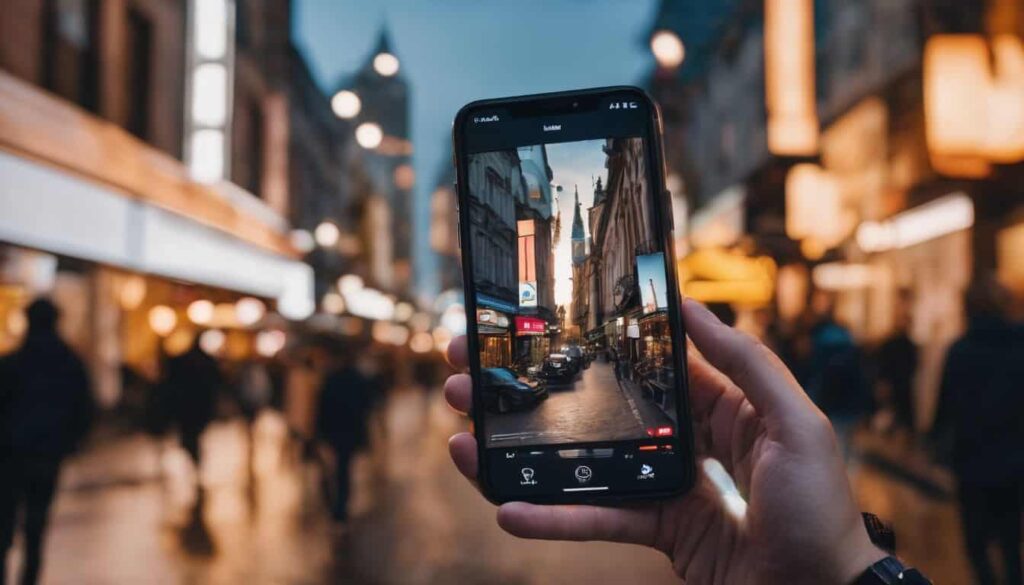
Encoding in video compression transforms raw video content into a format that is easier to transmit or store. This process saves space by reducing the size of the video file without compromising its quality.
Advanced algorithms find and eliminate redundant data, making videos smaller and more manageable. Once received, these encoded videos need to be transformed back into their original form so they can be viewed properly.
Decoding is this reverse process where the compressed information gets converted back to its original state for display purposes. Your device’s decoder interprets the encoded data from DVRs, NVRs, or IP cameras and translates it into a visible video sequence on your screen.
Decoders play an essential role in displaying high-quality images crucial for accurate video analysis results. Utilizing GPU-accelerated decoding can enhance this viewing performance even further with HD feeds.
Understanding Video Compression
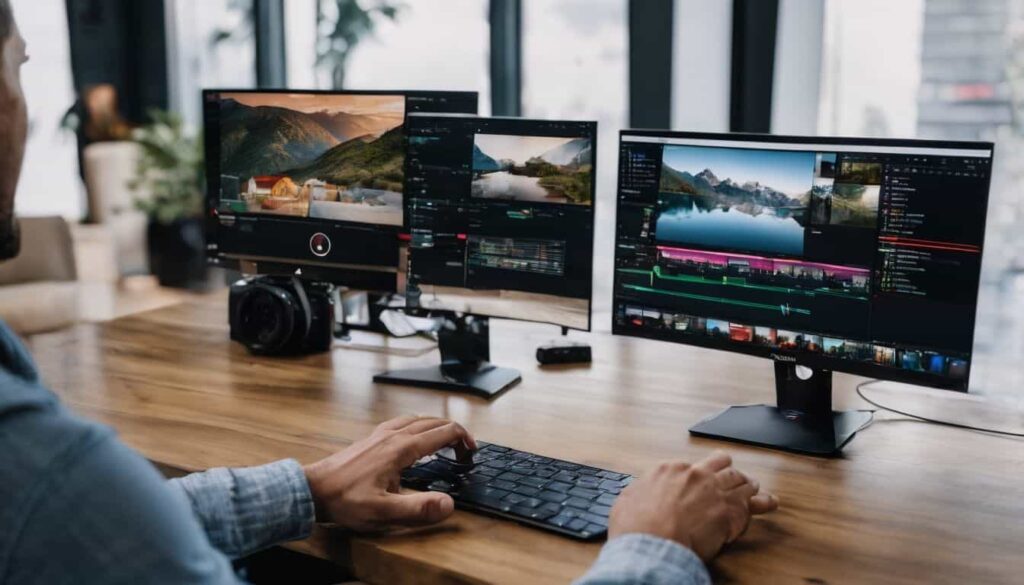
Video compression is the process that reduces and eliminates unnecessary files in your video data, making your video files smaller. This critical feature allows you to save more storage space while maintaining good image quality.
Understanding how encoding and decoding works, as well as how videos are created and played can help you make better choices when selecting a security camera system for your home or business.
Encoding and Decoding
Encoding and decoding play pivotal roles in security camera systems. In the context of video surveillance, encoding is transforming data from one format into another – usually, this means converting raw footage into a compressed digital file.
The encoder reduces the size of the video file while maintaining as much quality as possible, allowing for smoother transmission and decreased storage needs.
Decoding, on the other hand, is essentially reading that compressed file. A decoder reconstructs the original information from its encoded form back into a viewable format to display on monitors or other devices.
Without efficient decoding capabilities provided by decoders like NVRs (network video recorders), high-quality playback wouldn’t be possible on your viewing device or smartphone — regardless of how well you’ve encoded it in the first place.
Creating and Playing Video
Crafting and playing videos for security purposes involves synthesizing encoded data into a format your system can handle. Decoders play a crucial role as they convert data from DVRs, NVRs, or IP cameras into usable formats.
These decoders must meet the decoding specifications of the NVR to ensure smooth playback without any hiccups. Video quality plays an essential part in creating reliable footage for accurate video analysis – it entails more than just resolution.
Aspects like field of view and frame rate also significantly impact performance. To maximize viewing performance, especially with HD video, consider using GPU-accelerated video decoding options if available with your system setup.
A high-quality video feed is necessary not only for monitoring but also analyzes adjacent pixels and detecting edges in surveillance tasks. If you’re investing in business security cameras, give due consideration to recording and decoding resolutions to guarantee sharp images that are useful when needed most!
The Importance of Video Quality in Security Cameras
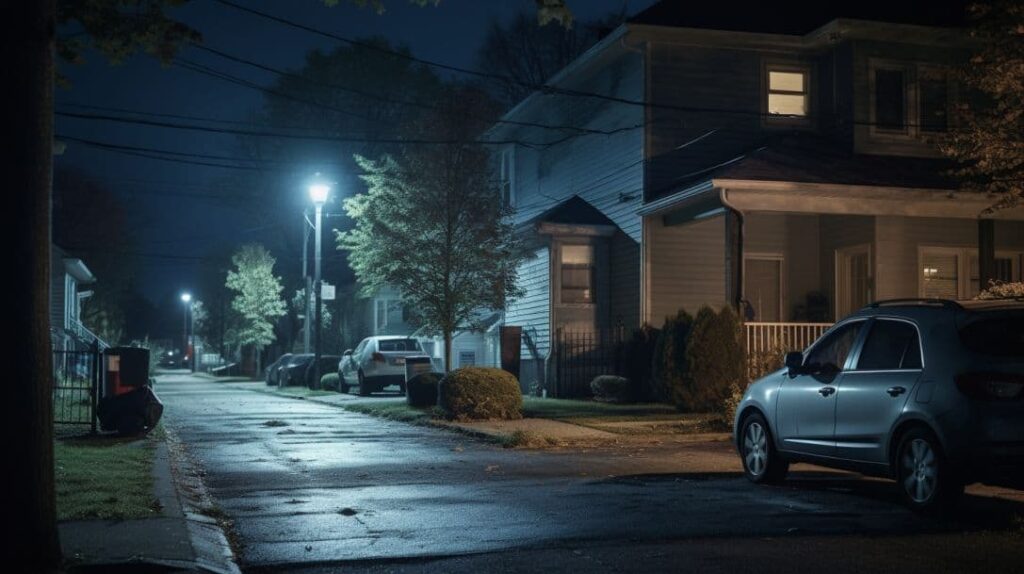
High-quality video is vital in security cameras as it ensures greater detail and image clarity. It’s not just about high resolution; factors like field of view and frame rate also play a substantial role in guaranteeing optimal performance.
Superior video quality enhances business safety, allowing for accurate surveillance and detection of any irregularities or suspicious activities within the premises. Decoders work with DVRs, NVRs, or IP cameras to translate incoming data into a usable format, contributing to this superior quality.
Different manufacturers offer varying levels of decoding abilities which affect the final output on your screen. You should consider these capabilities when choosing a camera since they can dramatically impact the feed’s overall integrity.
Furthermore, utilizing GPU-accelerated video decoding can significantly improve HD video viewing performance.
Analyzing adjacent pixels and detecting edges within a security footage requires an excellent and clear video sequence to ensure accurate results. Capabilities such as low-light performance, wide dynamic range, motion detection, remote viewing and data storage become more effective with better video quality.
Enabling hardware decoding boosts system efficacy while freeing up space used by CPU resources that could be otherwise used for running other tasks smoothly. A simple decision like focusing on the aspect of video quality during purchasing can enhance your entire surveillance experience exponentially!
Exploring Different Types of Security Cameras

Security-minded individuals like you have a wide selection of surveillance systems at your disposal when considering the purchase of a new security camera. These may include:
- Bullet Cameras: Known for their sleek, cylindrical shape, these cameras work well in small spaces and can be used both indoors and outdoors.
- Dome Cameras: With their circular, domed design, they offer a wider viewing angle making them perfect for large areas.
- PTZ Cameras: These Pan-Tilt-Zoom cameras can move up and down or side to side, offering extensive coverage.
- Box Cameras: These robust cameras provide high-quality video resolution while being flexible with interchangeable lenses.
- Thermal Cameras: These detect heat radiation and can capture images even in total darkness or harsh weather conditions.
Types of Security Camera Video Compression

In this section, we’ll dive into the different formats of video compression used by security cameras – primarily focusing on H.264 and H.265, discussing their differences and how they affect video quality and storage capabilities.
H.264 vs H.265
When comparing video compression standards for security cameras, H.264 and H.265 are two major options to consider. They are both efficient methods for encoding video data, but they have differences that impact their utility in security camera systems.
| H.264 | H.265 | |
| Bandwidth Efficiency | H.264 is less efficient than H.265, using more bandwidth for the same quality of video. | H.265 offers superior bandwidth efficiency, requiring less data transmission for equivalent quality video. |
| Video Quality | While H.264 provides good video quality, it may not be sufficient for detailed footage necessary in security surveillance. | H.265 provides higher quality video and detailed images that can be crucial for accurate video analysis in security systems. |
| Hardware Compatibility | H.264 has wide compatibility with hardware decoding devices, enabling improved performance and efficiency. | H.265, while superior in efficiency and quality, lacks some compatibility with older hardware, which can limit its operational range. |
| Storage Requirements | H.264 encoded video requires more storage space compared to H.265 for the same video length. | H.265 compression significantly reduces storage requirements, ensuring more video can be stored over a longer period. |
Keep in mind the specifics of your security camera needs when deciding between H.264 and H.265. If your hardware supports it, H.265 might be the preferable option for its superior efficiency and video quality.
Decoders In Security Camera Systems
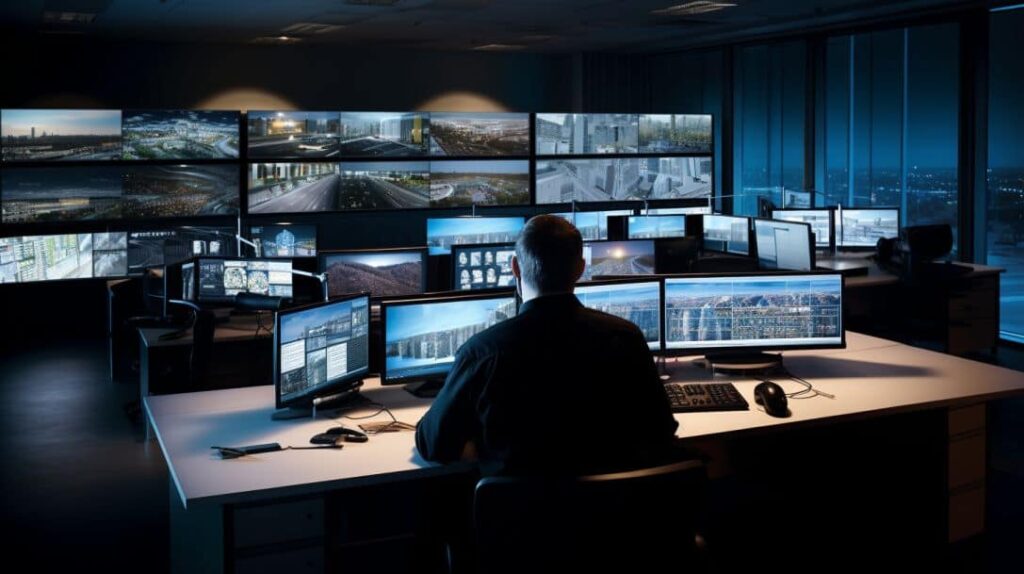
Explore the role of decoders in security camera systems, which convert video from a compressed format to a viewable one. Learn about standalone decoders vs. Network Video Recorders (NVRs), and how NVRs have revolutionized surveillance by providing high-quality footage and seamless playback.
Dive deeper into this fascinating world of cutting-edge surveillance technology!
Standalone Vs. NVR
While both standalone and NVR cameras are invaluable tools for ensuring security, their features and capabilities differ, making each one suitable for different security needs.
| Standalone | NVR | |
| Definition | Standalone security cameras are individual units that operate independently of a network. Each camera has its own storage and transmission system. | Network Video Recorders (NVRs) are systems that receive, store, and play back video footage from IP cameras on a network. |
| Video Quality | The video quality of standalone cameras can be good but often depends on the individual camera’s specifications and capabilities. | NVRs often provide superior video quality, as they can receive and decode high-definition video streams from multiple cameras at once. |
| Decoding Capabilities | Standalone cameras decode their own video feed, which can limit their decoding capabilities to the specifications of the individual camera. | Each NVR has a decoding specification that indicates how many cameras it can support and decode at once, often resulting in a more efficient decoding process. |
| Usage | Standalone cameras are ideal for small-scale security needs, such as monitoring a single room or entrance. | NVRs are well-suited for large-scale surveillance applications, such as monitoring multiple rooms or complexes, due to their ability to manage multiple cameras and provide a centralized storage solution. |
| Performance | While standalone cameras may seem less complex, their performance can be limited by their individual storage and processing capabilities. | With the ability to leverage GPU-accelerated video decoding, NVRs can enhance the viewing performance of HD video, providing clear and reliable feeds for accurate video analysis. |
Remember, your decision between a standalone camera and an NVR system will depend on your specific security needs, the scale of your surveillance application, and your desired video quality and performance.
Advantages of NVRs and How They’ve Revolutionized Video Surveillance
Network Video Recorders (NVRs) have ushered in a new era of video surveillance and offer significant advantages. Unlike traditional DVRs, they process the video data at the camera rather than the recorder.
This efficiency allows for higher resolution videos without straining your network’s bandwidth. Furthermore, NVRs can handle more cameras at once, thanks to their decoding specifications.
The advent of NVR technology has simplified remote surveillance like never before. With an internet connection, you can view live or recorded footage from any device no matter where you are in the world – making it easier to monitor your property effectively from afar.
GPU-accelerated video decoding enhances viewing performance even further, ensuring smooth and high-quality imaging for better security monitoring outcomes.
Factors That Affect Video Quality
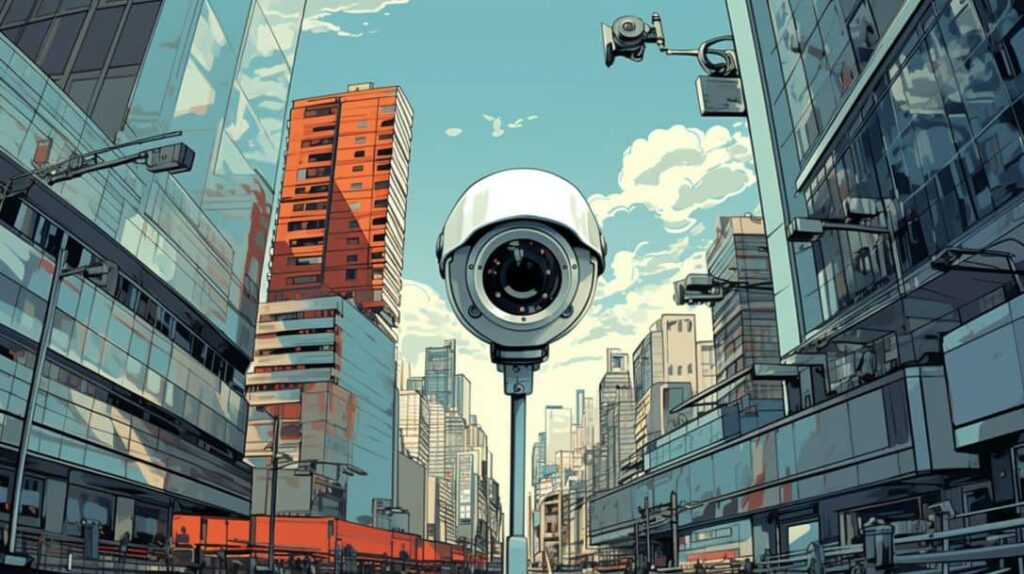
From the image sensor to resolution options, understanding the various elements influencing video quality can help you make an informed decision on your next security camera. Read on to delve deeper into these critical aspects.
Image Sensor
A security camera’s image sensor captures light from the scene and converts it into an electronic signal. This component plays a critical role in determining video quality, similar to how film determines the picture quality in traditional cameras.
Large image sensors can take in more light, resulting in better low-light performance and wider dynamic range. On the contrary, smaller or less advanced sensors may produce grainy images under poor lighting conditions.
As you select your next security camera system, ensure it has a high-quality image sensor for optimal results during day or night surveillance operations.
Resolution Options
Among security cameras, you may encounter options such as 720p, 1080p, and even 4K resolution. The ‘p’ stands for progressive scanning which contributes to a more detailed and smoother video image.
Higher the number before the ‘p’, greater is the detail captured on screen. However, higher resolutions often require more bandwidth and storage space to accommodate larger files sizes.
A 1080p or full HD camera provides an excellent balance between clarity and resource usage for most users. For areas requiring exceptional detail like entry points or cash registers, consider using a camera with high definition 4k resolution.
After all, clearer images aid in identifying individuals or spotting specific activities effectively during surveillance tasks.
Features of High-Quality Security Camera Systems

Dive into the assortment of crucial specifications that set high-end security cameras apart, including superior image quality, two-way audio capacity, continuous recording capabilities and more.
Explore how these features enhance your surveillance system for maximum security. Keep reading to learn more!
Superior Image Quality
Superior image quality plays a fundamental role in security camera systems. A high-quality video sequence isn’t just about aesthetics but is also critical for accurate video analysis results.
For instance, techniques such as analyzing adjacent pixels and detecting edges require a reliable and clear video feed, which can be achieved only with superior image quality. The importance of superior image quality is further amplified when considering the capability to capture finer details like facial features or number plates, especially in challenging lighting conditions.
Two-Way Audio
Two-way audio is a vital feature in top-notch security camera systems. It allows you to communicate directly with anyone within the camera’s range, acting like an intercom system. In times of potential danger or just checking up on daily activities, this function enhances your capacity to monitor and intervene when necessary.
The benefits are twofold; not only can you hear what’s going on around the camera area, but you can also speak through the device itself. Imagine telling a delivery person where to leave a package or calming down a scared pet while you’re away – two-way audio makes these interactions possible and easy! This functionality transforms traditional surveillance cameras into interactive monitoring tools.
24/7 Recording
Constant recording is a primary function of superior security cameras. With 24/7 video surveillance, no suspicious activity goes unnoticed, day or night. This continuous monitoring means you can revisit every minute of the feed if needed – it’s as though your vigilant eyes are always on your property.
It’s crucial that your camera system has ample storage capacity to handle the vast amount of footage collected around-the-clock. Many systems utilize cloud-based storage solutions for added convenience and accessibility.
Furthermore, innovative high-resolution cameras equipped with efficient encoders ensure optimal use of storage while maintaining video quality. Without interruption in the recording schedule, you enjoy an additional layer of security and peace of mind from potential threats or incidents at unexpected times.
High-Quality Night Vision
A high-quality night vision feature is vital for any top-notch security camera system. It ensures reliable surveillance in low-light conditions, a situation where most conventional cameras falter.
Today’s advanced security cameras boast infrared (IR) technology that allows them to capture clear images even in total darkness.
Night vision functionality isn’t just about recording after sunset; it’s also crucial during twilight hours or in poorly-lit indoor spaces. Cameras armed with high-quality IR sensors can deliver crisp and detailed footage regardless of the light levels.
Besides protecting your property from nocturnal threats, these advanced features enable accurate video analysis results too.
Multiple-Channel Monitoring
Multiple-channel monitoring plays a crucial role in an optimized security camera system. With it, several video streams from different cameras can be simultaneously viewed and recorded for comprehensive surveillance coverage.
This feature not only maximizes your monitoring capability but also enhances the efficiency of your security protocols by allowing real-time observation of multiple areas. For instance, you could keep an eye on both entrances and exits or concurrently monitor inside and outside zones, helping to ensure no suspicious activity goes unnoticed.
NVRs are often employed in this setup due to their superior decoding capacities which support multichannel viewing without compromising video quality. The ability to decode multiple feeds at once means that even in a multi-camera system, each feed maintains clarity and detail for accurate analysis later on if required.
In summary, using multiple-channel monitoring increases both coverage scope and visibility detail— critical aspects for any rigorous security plan.
Wider Coverage
Security cameras with wider coverage offer more expansive views, reducing the number of devices needed to monitor a particular area. High-quality security systems boast lenses that can cover wide angles, often up to 360 degrees.
This is crucial in keeping watch on larger properties or areas where blind spots could pose a risk. Not only does this provide comprehensive surveillance but also enhances the effectiveness and efficiency of your safety measures.
GPU-accelerated video decoding aids such cameras in maintaining clear images across their extensive field of view, even when monitoring activities from afar. It’s clear: selecting a camera with robust coverage capabilities plays an integral role in bolstering your property’s security.
Expandability
Security systems offer the flexibility of expandability. You can add more cameras to your network as required, which is a key advantage for growing businesses that may need additional surveillance over time.
The expandability feature allows you to cover more areas and monitor multiple locations simultaneously. Choose an NVR with a high decoding specification to support the addition of more cameras without sacrificing video quality or system performance.
This ensures continuous, unobstructed surveillance for enhanced business security and peace of mind.
Understanding Different Features of Security Cameras
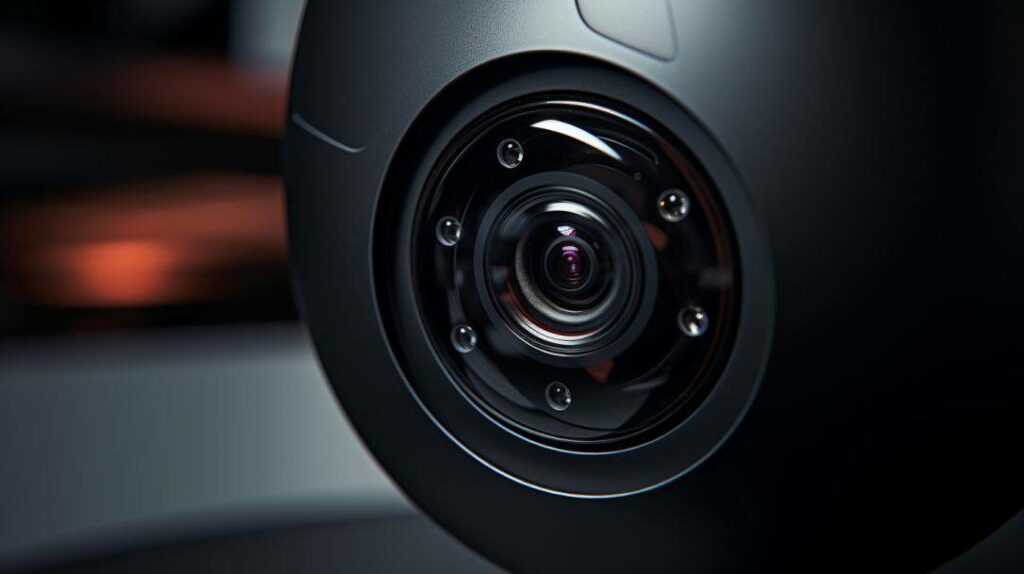
Security cameras come equipped with a plethora of features designed to enhance your safety and surveillance. Advanced motion detection uses change in pixels to detect movement within the camera’s field of view, alerting you about any suspicious activity instantly.
The wider the field of view, the more area your camera can monitor, reducing blind spots. Frame rate decides how smoothly your video plays back; higher frame rates mean smoother videos but also larger file sizes.
Light performance is critical too – cameras with good low light performance or infrared capabilities ensure clear footage even in dimly lit conditions. High-resolution security cameras offer superior image quality; however remember resolution isn’t everything when it comes remembering video quality – this is where decoding specification enters into picture telling how many cameras an NVR can support at once ensuring high-quality images without draining system resources heavily as outlined under point 7 above.
Lastly, efficient data storage options like cloud storage allow easy access and retrieval of footage whenever required while saving physical space.
Installation Guide for 4K Security Camera Systems
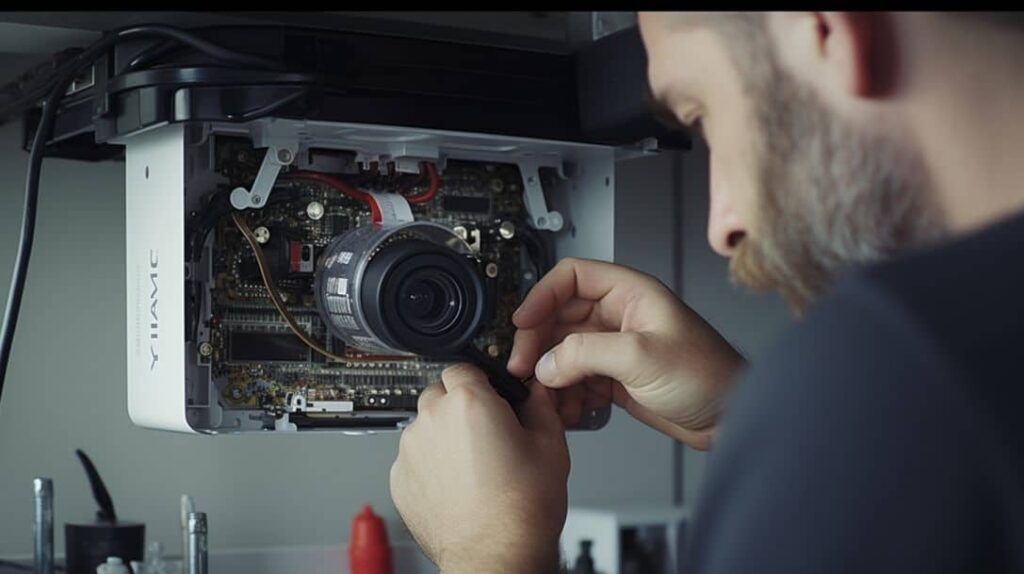
Navigating the installation of 4K security camera systems can be tricky, but our comprehensive guide simplifies this process for both wireless and wired PoE systems. Intrigued? Keep reading for more in-depth explanations!
Wireless Systems
Wireless systems offer the convenience of easy installation and operation. You don’t need to manage tangled wires or drill holes into your walls, making it ideal for those who value flexibility.
They operate by transmitting video signals over a secure WiFi network to a receiver connected to your storage device. These systems often come with dedicated mobile apps that allow real-time viewing from anywhere in the world.
Today’s advanced wireless security cameras possess excellent decoding capabilities for high-quality images, ensuring reliable performance under various lighting conditions. Note that while these systems deliver high convenience levels, their effectiveness depends on the strength of your WiFi network signal.
Wired PoE Systems
Power over Ethernet (PoE) offers a versatile solution for your wired security camera setup. By using a single ethernet cable, PoE systems provide both data connection and electrical power to devices like IP cameras.
This eliminates the need for separate power cables and outlets near each camera, leading to simpler installation and reduced clutter. Moreover, this feature enables you to deploy cameras in locations where typical AC or DC power may not be accessible.
Wired PoE systems also outperform their wireless counterparts when it comes to video quality and reliability as they are less susceptible to interference from other electronic devices.
Best Picks for 4K Security Camera Systems
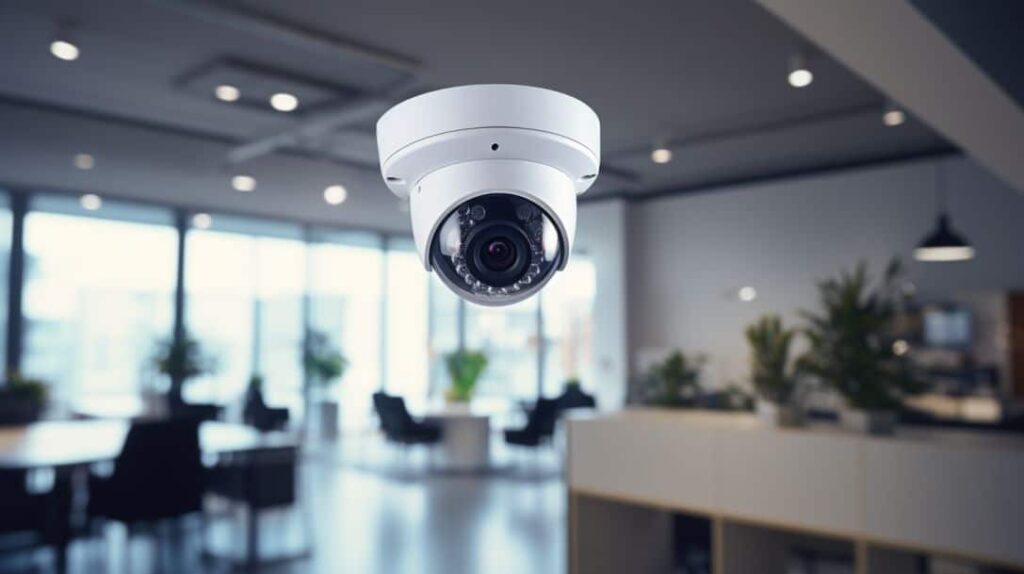
Discover our top choices for 4K security camera systems that bring exceptional image quality and robust features to your surveillance needs. Stay tuned to learn more about these high-performing models and how they can work best for you.
Best 8-Channel System
The Arlo Pro 3 Spotlight Camera is a top-rated 8-channel system revered by security enthusiasts. Its standout feature is its crisp, color night vision that provides clear footage even in low light.
Eight cameras can simultaneously connect to the central hub, enhancing coverage to monitor every corner of your property effectively. The system uses H.264 video compression technology ensuring high-quality videos while saving storage space.
With image sensor and resolution options, it offers superior image quality up to 2K HDR clarity for detailed and colorful recordings. Armed with an advanced motion detection mechanism, it alerts users about potential threats in real-time providing peace of mind at all times of day or night.
Best 16-Channel System
The best 16-channel system excels in providing an impressive coverage area. This type of system allows the simultaneous connection and recording of up to 16 cameras, dramatically increasing surveillance capabilities.
It is especially beneficial for larger properties or compounds that require comprehensive monitoring. The high-quality decoders ensure optimal viewing performance while maintaining efficient use of resources, making it a top pick for business security solutions.
Several manufacturers offer this expandable solution with varying video quality specifications to cater to diverse requirements and preferences. GPU-accelerated video decoding promotes clear image clarity even at high-resolution settings–a critical consideration when analyzing adjacent pixels and detecting edges for reliable video analysis results.
Therefore, choosing a 16-channel system equates to secure investment towards expansive surveillance and dependable protection.
FAQs about 4K Security Cameras
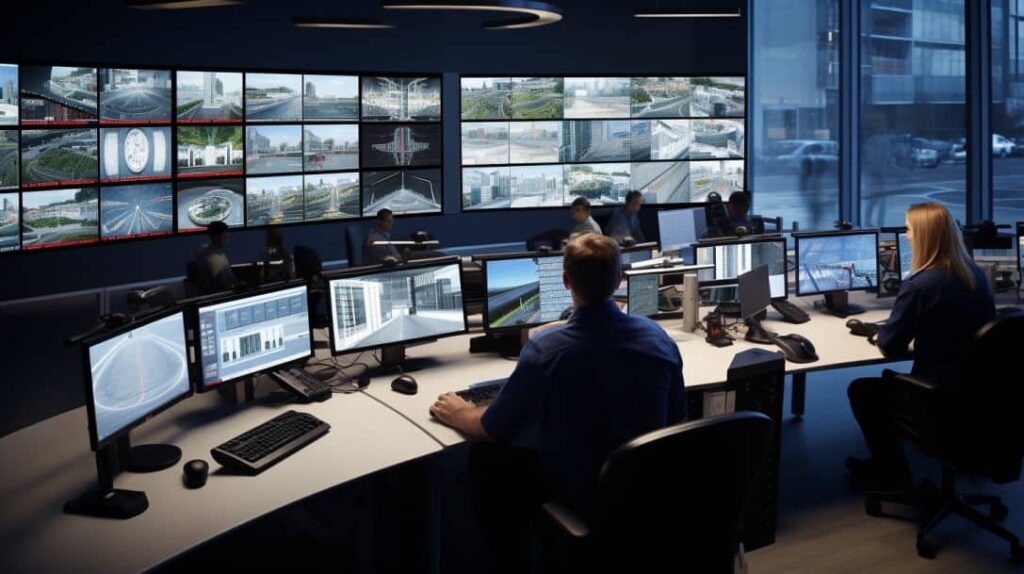
4K security cameras are a hot topic in the surveillance industry, and understandably, numerous questions often arise. Users wonder about the worthiness of investing in 4K quality or if it’s mainly hype over substance.
Breaking down several common queries, we uncover some valuable insights into these advanced surveillance systems.
The image clarity provided by 4K security cameras is unparalleled due to their high resolution. The power of 4K video shines through when you need detailed footage for identification purposes or analytical tasks like edge detection and pixel analysis.
Better low-light performance enhances recording capabilities during nighttime hours, making sure no detail goes unnoticed even under poor lighting conditions.
These features sound impressive on paper but carry weight practically as well; however, they also raise concerns regarding storage requirements and bandwidth use. Using efficient video compression technologies like H.265 can substantially reduce file sizes without compromising quality to fit more video data into your storage device.
Knowing how many cameras an NVR can decode at once is crucial for system planning to ensure seamless operation across all channels. Additionally, activating GPU-accelerated decoding improves overall viewing performance and efficiency while handling heavy-duty HD videos.
Ultimately deciding between different manufacturers involves comparing their product specifications with your specific needs in mind—whether it’s superior night vision functionality or two-way audio feature availability—as not all brands excel equally across every specification.
Conclusion
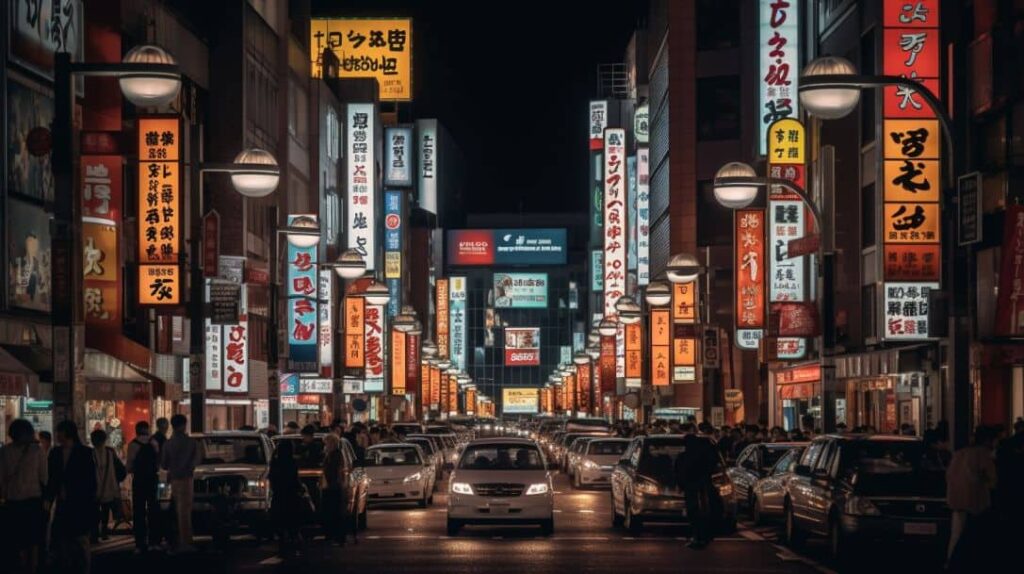
Decoding video quality is paramount to the effectiveness of your security camera. A high-performance encoder or decoder ensures sharp, clear images for precise surveillance. Hence, make a well-thought-out choice while picking your next security camera, considering factors like resolution, encoding and decoding capabilities, and many more.
Don’t compromise on quality – remember, it’s about safeguarding what matters most!
Conclusion
Decoding video quality is paramount to the effectiveness of your security camera. A high-performance encoder or decoder ensures sharp, clear images for precise surveillance. Hence, make a well-thought-out choice while picking your next security camera, considering factors like resolution, encoding and decoding capabilities, and many more.
Don’t compromise on quality – remember, it’s about safeguarding what matters most!
For expert assistance selecting and installing high-quality security camera systems, contact the professionals at Jefferson Security Cameras. With years of experience designing and installing surveillance solutions for commercial and residential properties, Jefferson Security Cameras can help you choose cameras with robust decoding capabilities and image clarity.
Jefferson Security Cameras offers a full range of security services including access control systems, intercoms, commercial monitoring and more. Our expert technicians will ensure your cameras are optimally positioned and configured, with top-notch encoders and decoders, to provide the sharpest footage day and night.
Ready to upgrade your property’s video surveillance system? Contact Jefferson Security Cameras today at (267) 656-7870 or contact https://jeffersonsecuritycameras.com/contact/ for a customized quote. With Jefferson Security Cameras, you can have peace of mind knowing your property is protected by high-performance, intelligently designed security camera systems.
FAQs
I see cameras advertised as 1080p or 4K. Does higher resolution automatically mean better video?
Not necessarily! The resolution determines the pixel count, but other factors like encoding, decoding, sensors, and frame rate all play a role in video clarity. A 4K camera can still produce fuzzy footage if these other elements are weak.
My backyard camera seems to get grainy at night. How can I get clearer night vision video?
Look for cameras with infrared night vision and large image sensors. The sensors can absorb more light, while IR illuminators enhance visibility in the dark. These will help your camera maintain crisp footage after sunset.
What should I look for if I need to identify faces or license plates in the video?
You’ll want a camera that captures very high resolution, at least 1080p. But also pay attention to the encoder quality, decoder specs in the NVR, and frame rate for smooth playback. These all contribute to sharp, detailed video.
I have 12 security cameras – will an NVR record them without losing video quality?
Check the NVR’s decoding specifications to ensure it can handle all your camera feeds simultaneously without sacrificing performance. Using GPU decoding also helps process multiple HD videos efficiently.
Why does video quality matter for security cameras anyway?
Grainy, pixelated footage makes it hard to discern important details like facial features or license plate numbers. Sharp video ensures your cameras are effective for identifying suspicious activity or people on your property.
